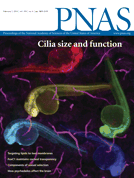
据外媒2月8日报道,《美国科学院学报》(PNAS)刊登德国一项最新研究发现,中指比大拇指及其它指头反应速度更慢,其关键原因是中指活动受到其所处位置的限制。
身体的每个部位都有各自对应的大脑神细胞经区,即大脑中有一张人体地图。这张地图的功能重要性尚不完全清楚。德国波鸿大学神经学科学家最新研究发现,测量反应时间和计算机模型研究有助于揭示大脑地图的可能作用。
研究发现,邻近“手指神经细胞”的抑制作用会直接影响到手指的反应时间。因此,外侧手指大拇指和小指反应速度比中指更快。这表明中指两侧的神经细胞的“交叉火力”(cross fire)会对中指形成夹攻。
试验中,研究人员在电脑屏幕上显示10根指头的图片,然后让参试者使用相应指头以最快速度按键。结果发现,大拇指和小手指反应速度最快,中指反应速度最慢。
新研究负责人休伯特丁斯博士表示,人们往往认为手指反应速度差异是由于解剖学原因或者练习不同所致。从理论上说,每根手指的反应速度应该一样。只有在完成选择性任务时,中指才明显处于劣势。

Cortical topography of intracortical inhibition influences the speed of decision making
Claudia Wilimziga, Patrick Ragertb, and Hubert R. Dinsec
The neocortex contains orderly topographic maps; however, their functional role remains controversial. Theoretical studies have suggested a role in minimizing computational costs, whereas empirical studies have focused on spatial localization. Using a tactile multiple-choice reaction time (RT) task before and after the induction of perceptual learning through repetitive sensory stimulation, we extend the framework of cortical topographies by demonstrating that the topographic arrangement of intracortical inhibition contributes to the speed of human perceptual decision-making processes. RTs differ among fingers, displaying an inverted U-shaped function. Simulations using neural fields show the inverted U-shaped RT distribution as an emergent consequence of lateral inhibition. Weakening inhibition through learning shortens RTs, which is modeled through topographically reorganized inhibition. Whereas changes in decision making are often regarded as an outcome of higher cortical areas, our data show that the spatial layout of interaction processes within representational maps contributes to selection and decision-making processes.
文献链接:








